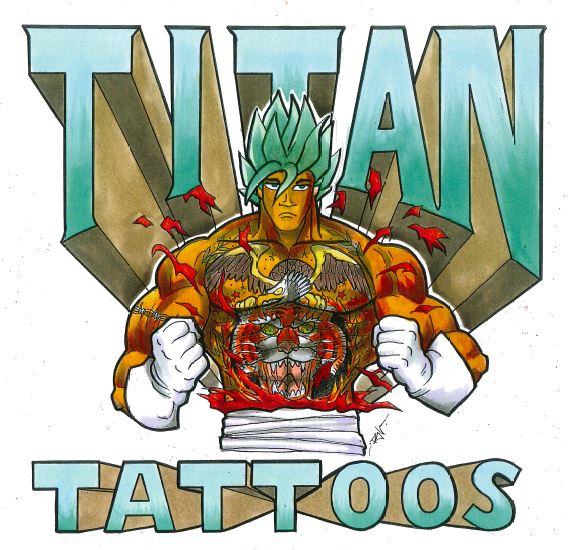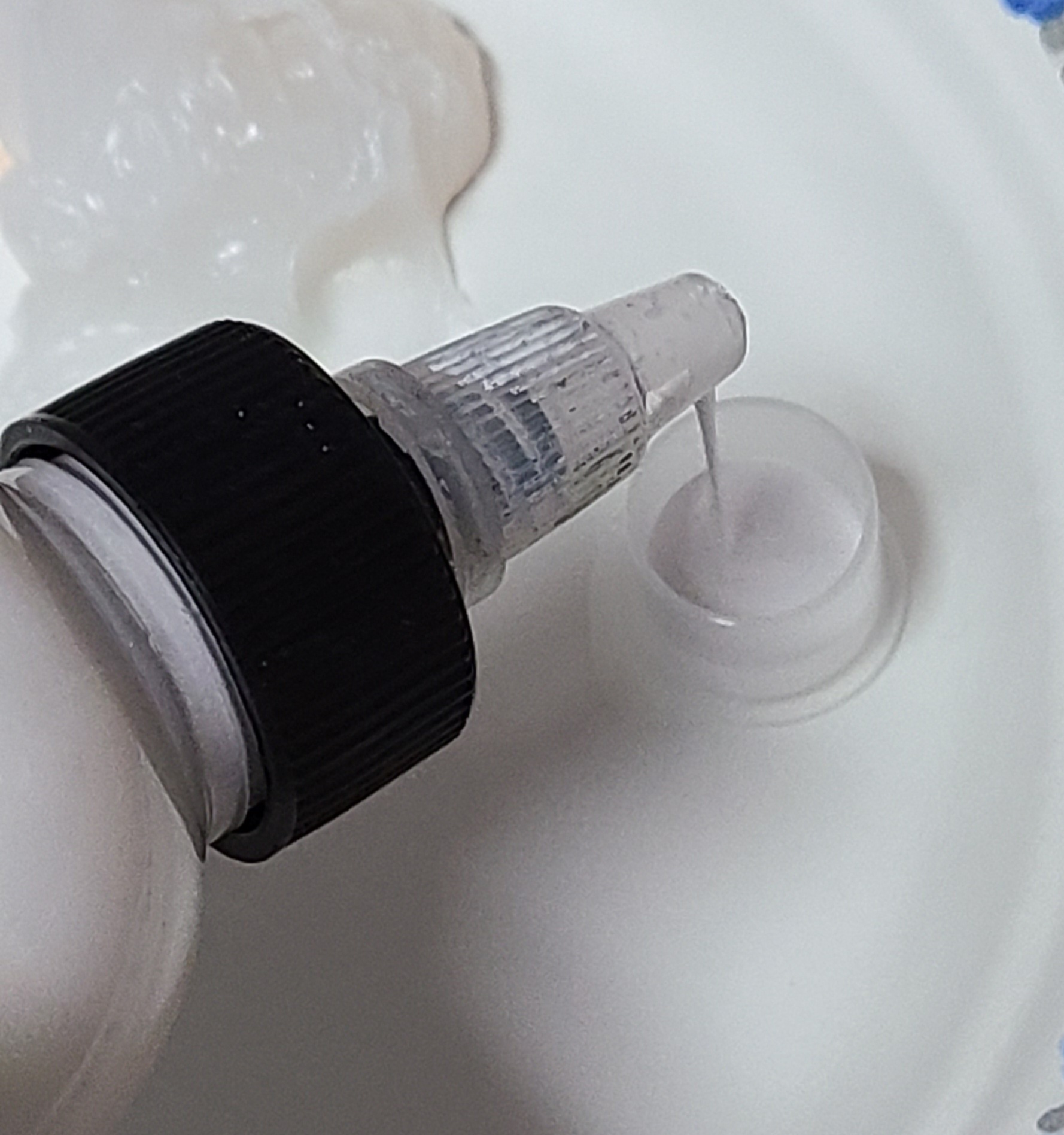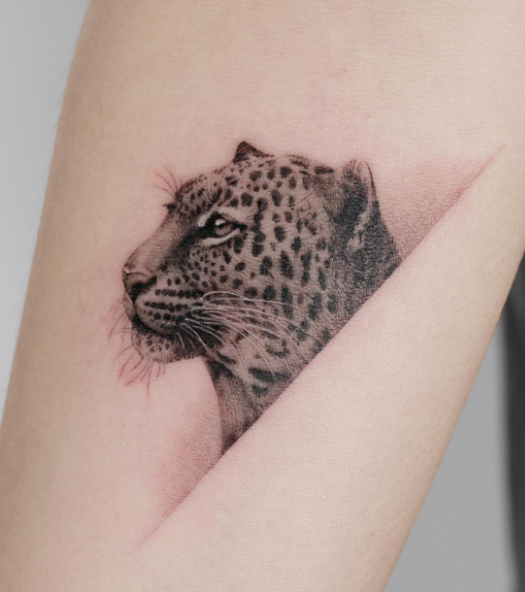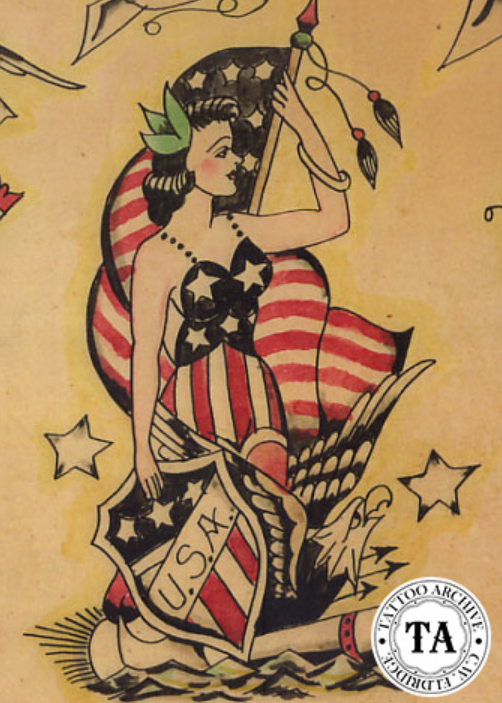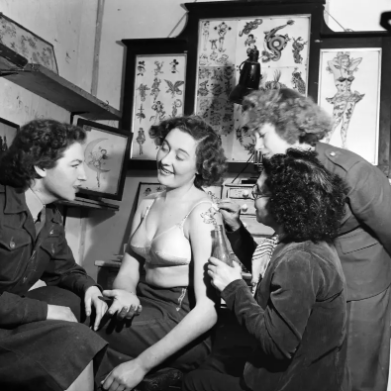American Traditional Part 6: Paul Rogers
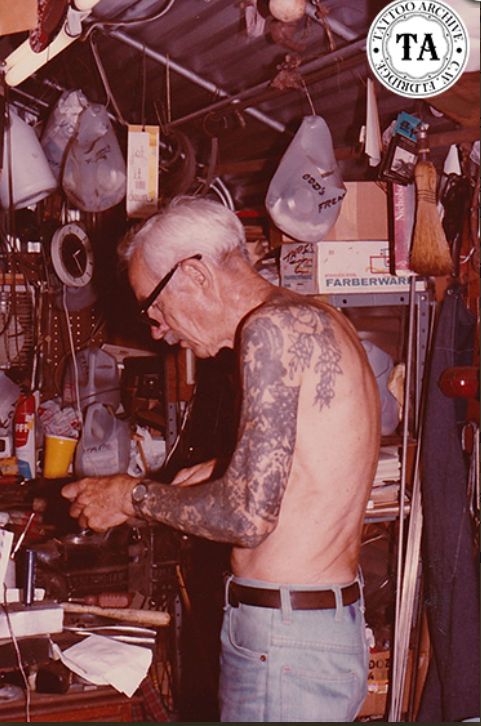
Franklin Paul Rogers, known as Paul Rogers is a monumental tattoo figure, he has participated in every part of the industry through his years in tattooing. He is even referred to as the Father of American Tattooing. Rogers was born on September 9th, 1905 in a cotton mill town in North Carolina. He worked at cotton mills in various towns throughout his life, even while building his career as a tattooer. Paul Rogers got his first tattoo from Chet Cain at the age of 21 and completely fell in love with the craft (which resonates with a lot of us in the industry). World Famous Tattoo Ink, reports that Cain gave Rogers advice on art during this session. After working on his art for the following 2 years, at 23 Rogers bought his first tattoo kit by mail order, changing the industry forever.
Like many who tattooed in the early-mid 1900’s Rogers joined the circus in 1932 and tattooed at the carnival circuits with the J.J Page Show; he even did some acrobatics! During this time he was still returning to cotton mills to sustain himself during the winter months. Shortly after the J.J Page Show, Rogers joined a new show, the John. T. Rea. Happyland Show. The Happyland show was where Rogers met his long time wife (who also happened to be the bosses daughter). This lifestyle suited Rogers and his wife Helen for the next 10 years, transitioning between the carnival in the summer and the cotton mills in the winter. Finally after over a decade tattooing Rogers took his artwork to the next level in 1942 when he seized the chance to tattoo fulltime in Charleston, South Carolina.


Shortly after, in 1945, Rogers joined forces with tattoo legend Cap Coleman in Norfolk. Tattoo Archive says of their partnership, “Coleman was already a legend in the tattoo world and Paul said it was like a dream come true to be invited to work with Coleman.” Rogers was also making a much greater living at this time. Tattoo Archive goes on to say, “At this time his pay envelope from the mill for a 40-hour workweek was $42, which was the biggest payday he ever had in the mills…Paul now was making $150 to $200 a week.” In 1950 when Norfolk shut down tattooing Rogers had a solid foundation and opened his own shop with a partner, Lathan Connelly, in Virginia. They went on to open another shop in Rogers’ home state of North Carolina. Following his string of successful shops, Rogers dove into another area of the industry when he started his next business with Huck Spaulding, Spaulding & Roger’s which was a mail order tattoo supply company; not unlike the one he ordered his very first tattoo kit from. Though Rogers and Spaulding worked together until 1961 Rogers did not stay heavily involved with the mail order company the entirety of their time together.


Paul Rogers moved around the U.S constantly to tattoo with the best of the best and perfect his craft. 1961-1963 was spent in New Jersey with Sailor Eddie Evans. Following this he went to Florida to tattoo with Bill Williamson. Rogers wasn’t with Williamson very long before Williamson suddenly died only the next year and Rogers took over his shop, but his adventures were not over yet. A few years later in 1970, Rogers was back in New Jersey for a short time working with Ernie Carafa. By the end of 1970 Rogers and his wife Helen were back in Florida to finally settle down after a life on the road. They bought a mobile home in Florida where Rogers started the Iron Factory. A business building and improving tattoo machines. With decades of experience under his belt in which he spent his time working alongside the masters, Roger’s created some exceptional tattoo machines.


Tattoo Archive summarizes just how big of an impact Rogers made saying, “Paul referred to his machines as “Irons”. These “Irons” went into the hands of some of the best tattooists in the world: D.E. Hardy, Greg Irons, Martin Robson, Dale Grande, John Lenz, Greg Skibo, George Bone, Dennis Cockell, Jack Rudy, Kari Barba, Juli Moon, Tom Beasley and Bob Roberts, to name just a few. Today Paul’s machines are in great demand and command some of the highest prices paid for tattooing machines.” World Famous Ink expands on his contributions to the industry saying, “Over his decades-long career, Rogers helped mentor apprentices, guide other artists – even becoming one of the first advocates for female tattooists.”

Sadly in 1982 Paul’s wife Helen passed away only a year before their golden anniversary after 49 years of marriage, she was laid to rest in Virginia. The next year, after a lifetime spent in every crack of the tattoo industry Rogers was accepted into the tattoo hall of fame in 1983 located in San Francisco California, a division of the still famous Lyle Tuttle museum. Unfortunately in 1988 Rogers suffered a stroke from which he never fully recovered. He spent his last few years in a nursing home, passing away in 1990. He was laid to rest next to his wife in Virginia. Rogers left his tattoo collection to the Tattoo Archive.

Roger’s had a nomadic lifestyle and seemed to be constantly on the move. Thankfully Tattoo Archive has provided us with a clear cut timeline. Definitely check it out here for even more of the details on his life and adventures.
Shortly after his death a non-profit was formed in his name, The Paul Rogers Tattoo Research Center, with the goal to preserve tattoo history, and that it has. You can donate to the P.R.T.R.C in his memory and you even get a cool tattoo related gift! Paul Rogers is still a greatly celebrated figure in the industry from his artwork to his machines Rogers changed tattooing forever.
Sources:
- https://www.worldfamoustattooink.com/blogs/blog/the-legacy-of-american-tattoo-artist-franklin-paul-rogers
- https://www.tattooarchive.com/history/rogers_paul.php
- https://www.tattooarchive.com/research_center.php
- https://www.tattooarchive.com/history/rogers_paul_timeline.php
- https://thisistrovegeneralstore.wordpress.com/2012/02/21/a-little-history-of-the-early-american-style-tattoo-pt-2/
- https://www.tattooarchive.com/history/rogers_paul_machines.php







































































